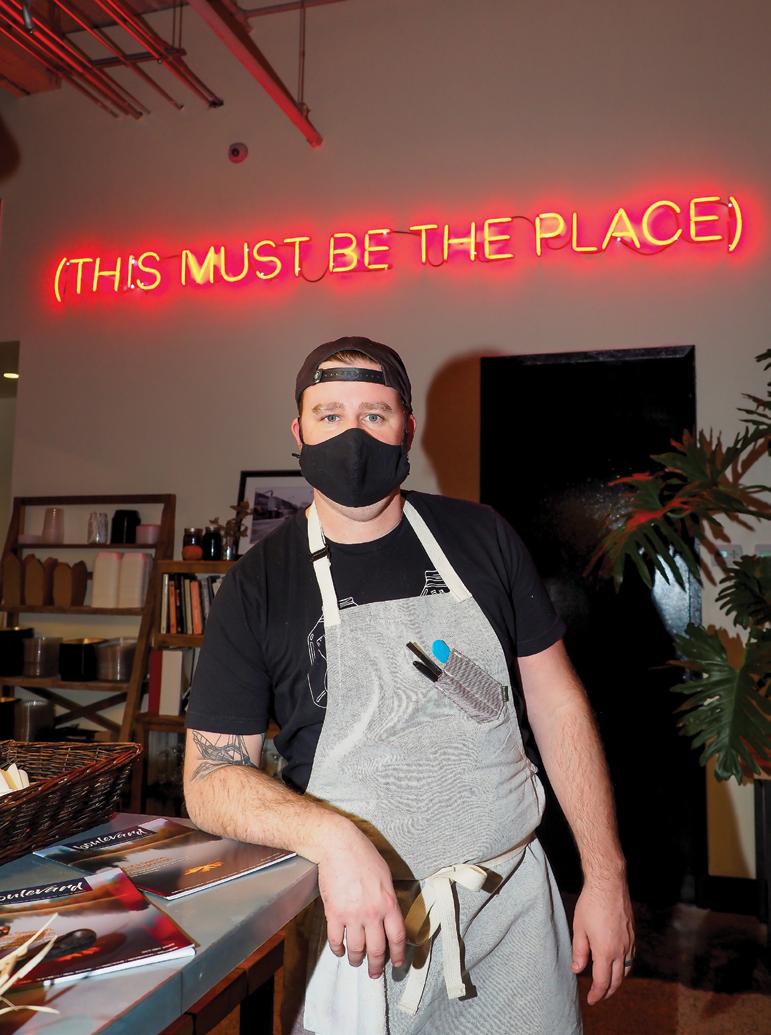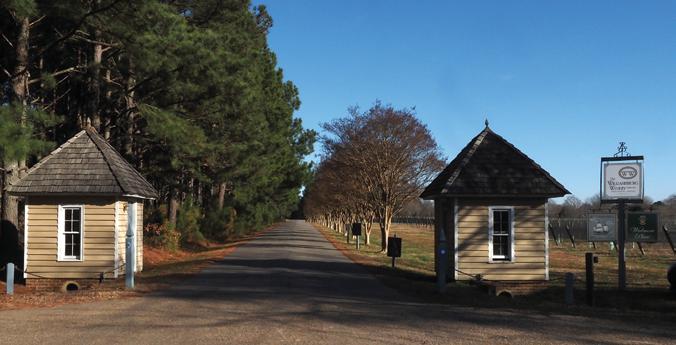
12 minute read
Elbert Watson: A Career en Pointe
ELBERT WATSON
[ by jill doczi ]
Advertisement
Photos courtesy of Elbert Watson’s personal collection unless otherwise noted
lbert Watson, biologist? Elbert Watson, historian? Although he started down these paths in college, he became disenchanted with the subjects. He also participated in the college dance team and outside dance classes while studying at Norfolk State University and fortunately for the world, he chose to become Elbert Watson, dancer. Once he made the decision, the course of action became evident. “Everybody recognized that I was exceptional at dancing as a hobby,” said Watson. “Few were in agreement with dance as a career. All are proud now. I share the story that one day I heard some elderly people discussing their lives. Many expressed that if they could do it all over again they would have done things differently. It was in that moment that I decided that I would never come to the end of my life with regrets. I was going to be a professional dancer. If it didn’t work out, at least I pursued that dream.” He changed course and set out to make his dream become reality. “I decided to study at the Academy of the Tidewater Ballet under Gene Hommett,” said Watson. “It was the place to study if you wanted professional training and you wanted to pursue a career in a dance company.” Watson grew up in Norfolk, VA dancing with the modern dance group at Campostella Junior High School, the Tidewater Dance Guild, the Norfolk State University dance theater and the Academy of the Tidewater Ballet. His dance ability surfaced early in life. “I won every dance contest in the neighborhood,” said Watson. “When families visited me at home, I was always called out to show or compete. I always loved music and movement. Music was always a part of my life. I remember Brooke Benton, Dinah Washington, Harry Belafonte, Lena Horne. There was music and rhythm at church. I had an aunt, Josephine, who always taught me the latest dance steps. There was “American Bandstand,” “Shindig,” “Soul Train.” Comprehending new moves was always love for me.” His first paid dance-related jobs included his one-man show at Virginia State University in Petersburg, VA and some local functions. While these had a home-state appeal and he felt that the audiences appreciated his talent and presentation, his career had so much more in store. He traveled and moved often in the beginning of his career. When he joined the prestigious Alvin Ailey company, he had never flown in a plane before. “We flew West Coast, East Coast, South and North, Africa, Europe, Asia and more recently New Zealand,”Watson said. “What I didn’t enjoy towards the
MAKING DANCE AN INTEGRAL PART OF LIFE

RICK BLANTON

His career has taken him across the globe, landing him back home—at Norfolk Academy
end of my time with Ailey was the constant checking into another hotel room.” His favorite performance to date is always the one in the moment, but standouts include: • Dancing with the Ailey Company in front of the pyramids in Egypt • Dancing in Diocletian’s Palace in
Yugoslavia • Dancing the role of Count Dracula in Kassel, Germany • Dancing on an outdoor stage in the rain at the Palais des Papes in Avignon, France, when the audience stayed in the storm to see the remainder of the performance • Dancing Othello • Choreographing and dancing in an original ballet for the Holocost
Commission titled “I Flutter My
Wings But I Can’t Fly Away” • Dancing to Martin Luther King, Jr.’s
“I Have A Dream” speech • Dancing and leading the audience in movement for
Virginia Symphony for a healing community concert after the
Charlottesville riot incident After traveling the world for years, dancing, collaborating, creating and receiving numerous accolades (see sidebar), he eventually landed permanently back in Norfolk, but not by design. “I was between jobs in Germany, waiting for my director at the time to call about a new theater assignment,” said Watson. “I came home to visit my parents and among the part-time jobs I got was as an instructor for Academy Arts. I was hired the following fall to instruct the dance team. Still waiting for my call from Germany, I was hired again in the spring. When the call finally came to go back to Germany, I had this epiphany that I loved teaching children and directing. The headmaster challenged me to build a dance program. I accepted the challenge and here we are.” Coming from a world-renowned background with an esteemed resume, Watson faced this new audience at Norfolk Academy with a sense of amusement at their reception and their opinion of the art of dance. As usual, his initial job description and impression expanded by leaps and bounds as he settled in. “I was the first African American teacher hired. Initially I was a bit of a novelty because fine arts weren’t considered that important and dance was perceived as a female sport. Boys wouldn’t even walk through the room. That’s changed 100-fold. The interesting question I was always asked was, ‘What do you really do—is dance a hobby?’ I found, in general, unlike in New York or Europe, dance was considered a hobby not a career.” He first made a commitment to approach his craft in a new way personally.

Elbert Watson describes himself as a dancer, choreographer, director, coach, administrator, artistic advisor and teacher. He is a former principal dancer with the Alvin Ailey American Dance Theatre, the State Opera Ballet Company Staatsheater of Kassel, Germany, The Pearl Primus Earth Theater and The Joan Miller Dance Players.
He studied classical ballet at the New York Conservatory of Dance with Vladimir Doukodosky and Nina Stragonova. He taught at Brooklyn College, Adelphi University, Wichita State University, The College of William and Mary, Florida Agricultural and Mechanical University, Norfolk State University, Virginia State University, The Governor’s School at the University of Richmond, Christopher Newport University, The Gresham School in Holt, England, Eastern College, Hampton University, Old Dominion University and the Virginia Governor’s Magnet School.
He served as the former artistic director of the Nanette Bearden Chamber Dance Group of New York, and the former ballet master of the Virginia Ballet Theater. He serves on the advisory board of Learning Bridge, the artistic advisor of the Portsmouth Redevelopment Dance Project. He collaborated on projects with the Chrysler Museum (Rodin exhibit, the Murano glass exhibit and the Barbara Morgan photo exhibit about Martha Graham) and the Virginia Symphony as choreographer for the “Heroes and Human Rights Series.” In the spring of last year the Chrysler museum asked him to choreograph a dance response for the Daniel Rozin interactive exhibit.
Norfolk Academy named him teacher of the year in 1997 by the upper school student council and teacher of the year in 2007 by the lower school. He also received the city of Norfolk legacy award for work on dance education 2018, the alumni dance theater award presented by Norfolk State University dance theater 2018 and the distinguished alumni award presented by friends and Booker T. Washington high school 2019. He received the J.E. Wallace Sterling Award for Scholastic Achievement at Stanford University in 2014 for contribution to the education of high school students for exceptional influence on Dustin Fink, a former Norfolk Academy student. He taught and choreographed in schools and universities throughout the United States, Europe, New Zealand and the Caribbean. He currently instructs as the dance master at the Norfolk Academy, where he introduces dance not only as an art form, but as a communicative bridge between athletics and academics serving to enhance the learning process for grades 1 through 12 in ballet, jazz, creative class projects, musical theater, pointe, hip hop”kinetic learning projects,” tik tok and stretch and strengthen classes for the faculty. In 2011 he received the teacher of the year prize in middle school.
He served as a former member of The Commission of Arts and Humanities for the city of Norfolk, and currently serves as the master teacher for the Ballet Virginia International and for the city of Norfolk Dance Program, founder of the Tidewater Dance Collective and The Elbert Watson Dance Company. He teaches sunday school, leads worship, serves as a church elder and as event teacher at the Fit Company in Norfolk.
Watson co-founded Kinetics of Stone, an international visual and performing arts collaborative, started in Christ church, New Zealand, and currently in Graz, Austria and he created the original Ballet “I Flutter My Wings But I Can’t Fly Away” for the Holocost Commission.
“Most dancers either stop and change careers or they become dance instructors only,” said Watson. “My first goal for myself when I came to Norfolk Academy was to make dance an integral part of life. I came out of the isolation of the dance studio and found ways to apply and collaborate with others, using dance skills that I had. Having worked in classical ballet, hip hop, now tik tok, I came to every situation with a multilingual movement approach. I teach 1st through 12th graders and work with the athletic teams and do many projects with city of Norfolk public libraries. I do private consultation for dancers, athletes, laypeople. My life is a constant trajectory of discovery and celebration. There is always some new method, insight, technique to learn.” In true form, he quickly began innovating, creating and
collaborating—expanding the idea of the art and function of dance for those around him. “I so enjoy the endless atmosphere of innovation, the chance to collaborate and the fearless opportunities to make paradigm shifts,” said Watson. “Collaboration has been great joy. It’s so fulfilling to talk to colleagues and come up with an adjoining lesson plan. Also meeting students 1st grade to 12th grade. Whether middle school science, ancient history, Latin, geometry, the Renaissance, the novel “Jane Austin,” upper school English, World War I poems, the solar system or the dance of the butterfly, I am always learning. It also becomes an opportunity for students to see two teachers from diverse disciplines working together.” “I have come to the conclusion through my work at the academy— this includes now all sports teams, private stretch classes for colleagues, kinetic learning adult dance programs, musical theatre and a host of other movement-related activities—that the human body is an amazing instrument in all forms and sizes.” Watson took his work at the academy and spread his artistry throughout the greater community. He sits on many boards and collaborates constantly with others in the area. “I love creative challenges,” said Watson. “I love meeting new people. I love bringing to fruition someone’s dream even if they can’t articulate it—choreographing a couple’s first wedding dance, creating a plant dance for the Botanical Garden’s 50th anniversary, creating a 70s-themed review with jumpsuits and 8-inch shoes, performing “One More River to Cross” at the Attucks Theater’s 100th anniversary, dancing the Arabian pas de deux for the Virginia Regional Ballet in Williamsburg and the Virginia Ballet Theatre in Norfolk—new ventures capturing always that sense of play and discovery.” Watson uses the Virginia Arts Festival as his measure for the state of dance in relation to the arts community in the surrounding cities. He says they sponsor excellent dance companies and the event definitely has a dance audience. He also notes that all of the major theaters in the seven cities have a strong dance component. He would like to see more opportunities for regular citizens to dance. “Somehow many people in our culture feel that after 20, you shouldn’t dance,” said Watson. “Also, I would like to see every physical education program have a dance component. I have had to teach every section of 6th grade because of COVID and I have found that dance provides an artistic and athletic experience that can be applied to everything. Before COVID, we had a Wednesday boy’s class, which at its peak had over 25 boys.” Over his illustrious career Watson has seen many things change in the dance world. One thing stands out as both a positive and a negative: “With the enhancement and dominance of media, I have seen less original development of movement and teaching methods,” said Watson. “Many people don’t understand the craft of how to study technique and the use of literacy as motivation to


create. Reading great books, going to museums, researching great art, having time for reflection and quiet to formulate unique ideas. Not regurgitating what is popular. It seems now you have to be a cross between a gymnast, an acrobat and a contortionist in order for people to really appreciate you. However, I have found true artistry always wins out.” Watson has sound advice for those considering a career in dance. “You must absolutely love it,” said Watson. “Like breathing—you can’t do without it. You must be disciplined. That includes going to dance class (ballet, contemporary, jazz) you must be willing to sacrifice your time and prioritize your plan of action. You must be able to take constructive criticism. You must be able to work with different people.” And for those who wished to follow the career path highlighting their love of dance, but either due to lack of ability or other circumstances could not? “Everybody can’t be a professional dancer,” said Watson. “However, everybody can study and appreciate the art form for as long as they live. There are adult classes. There are performances, there are workshops to continue facilitating and enlivening one’s love for the craft. I love people who have identified and are aware of their purpose in life. Specifically, people who sacrifice their own agenda to serve others, people who have a moral compass, who are honorable not just in word, but in actions and deeds. Integrity and humility are big on my list.” Watson hopes all his students have learned five things from him: Always be on time. Never give up perseverance and discipline. Always strive to do your best, always try. Being able to work with others is so important and, without question, always have faith in God and yourself. Personally he always follows Matthew 6:34: “Take no thought for tomorrow, “With the enhancement and dominance of media, I have seen less original development of movement and teaching methods... not regurgitating what is popular. True artistry always wins out.”
— Elbert Watson
for tomorrow shall take thought of itself. Sufficient unto the day is its own troubles. Basically—one day at a time, one moment at a time, one breath at a time.”
Jill Doczi has written and edited in public relations, marketing and journalism for a lifetime, forever trying to earn the respect of her journalism instructors. She resides in Virginia Beach—her home since the end of high school—while a piece of her heart remains in the Virginia mountains of her adolescence. She oversees a postage stamp of property by the Chesapeake Bay including pond fish and yard turtles, while defending her urban farm from squirrels.











